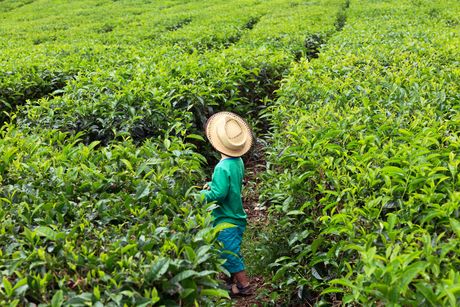Fair trade, not 'aid'
By Dr Kaushik Sridhar, Manager, Corporate Citizenship, KPMG*
Monday, 09 November, 2015

While fair trade has its advocates and sceptics, its aim is generating and producing positive impacts and benefits for producers in the developing and developed world.
The Fair Trade Advocacy office defines fair trade as a “trading partnership, based on dialogue, transparency and respect that seeks greater equity in international trade. It contributes to sustainable development by offering better trading conditions to, and securing the rights of, marginalised producers and workers — especially in developing countries.”
However, fair trade is more than just a trading partnership; it hinges on a concerted social push to develop procedures and standards for production practices and delivery, wages, working conditions, environmental health, and social policies and metrics in the supply chains of certified goods.
To be pedantic, there are some small but critical differences in terminology. Fair trade is used to refer to the fair trade movement as a whole and the organisations that abide to its principles. Fairtrade, however, is used to describe the certification and labelling system governed by Fairtrade International. The Fairtrade system allows consumers to identify goods that have met internationally agreed Fairtrade Standards and carry the Fairtrade mark. So some products can be fair trade, but not labelled Fairtrade.
Fair trade has a number of benefits, to both producers and consumers.
Fair trade agreements offer improved access to global markets and competitive prices. This level of accessibility is considered key for sustainable poverty reduction. Although the impact may vary from country to country, fair trade has an overall positive impact on both small producers and plantation workers in producing countries.
Fair trade can also have an impact in reducing poverty. But a word of caution is needed as fair trade is not a permanent cure for poverty-stricken farmers and plantation workers. A number of factors constrain fair trade’s impact on poverty, including volume of production, the size of farms and externalities out of their control relating to market conditions.
Fair trade plays a role in producers developing a more sustainable approach to natural resource management which can lead to a positive environmental impact. Meeting Fairtrade Standards set by Fairtrade International has resulted in many countries in improved production practices and environmental projects. It also provides a pathway for farmers and small farmer organisations to have increased management and negotiating responsibilities.
While the fair trade movement has driven consumer awareness and demand for socially and environmentally sourced products, it has its challenges. Overall, I believe the biggest challenge is around integrating sustainability and transparency into the entire fair trade value chain.
In particular, the level of engagement across the entire supply chain is varied. Growers and farmers in remote regions generally have little access to market information on their product price and value. While farmer cooperatives (co-ops) have been set up in remote regions to manage the fair trade process and reinvest the fair trade premiums, farmers are generally left out of the co-ops’ decision-making process on buyers and pricing.
There is a fundamental disconnect between farmers and co-ops; this in turn leads often to a lack of awareness by farmers on the final destination of their product, its end use and price.
Farmers need to be empowered with a sense of ownership in fair trade and this could be accomplished with fair trade re-engaging the farmer at a grassroots level. Another method to combat this issue is to be more selective when certifying organisations; in particular, it should only certify organisations that empower farmers right up the supply chain, giving them a sense of value-add from their work and a voice in decision-making.
Increasing commodity prices is another challenge for the fair trade movement. The price of a cup of coffee seems exorbitant, but this is the market price. If a farmer can sell a pound of commodity coffee for $3 as opposed to a fair trade price of $2, the farmer may choose the market price. This challenge is combined with another issue of taste, which is sometimes a criticism of fair trade products such as coffee and tea. Some of the fair trade tea and coffee I have tasted in the past hasn’t been the best.
A product that’s fair doesn’t necessarily equate to a compromise on quality. The fair trade certification process should include a criteria on quality including stringent taste testing. This could alter the perception of the fair trade price being a ‘ceiling’ rather than a ‘floor’.
I see fair trade as a fundamental way to reduce poverty and increase sustainable development and as a catalyst for socially responsible consumption. Its fundamental purpose is to create opportunities and promote inclusion for producers who have been economically disadvantaged or marginalised by the traditional trading system. Despite its failings, every organisation and individual should consider how ‘fair’ their products are before they buy.
How to navigate Australia’s new climate regulations
Australia’s new mandatory climate reporting regulations are set to take effect next year,...
A concrete use for carpet fibres
Australian engineers have come up with an unexpected use for discarded carpets: as a means to...
COP29: finance, a "crucial" opportunity and a seat at the table
Leaders and diplomats from around the world are descending on Baku, Azerbaijan, this month for...







